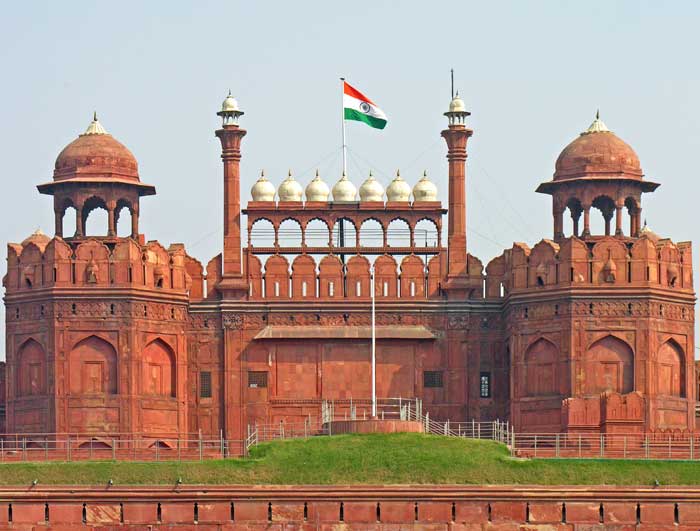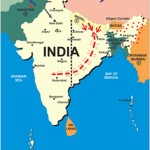
• There are several reasons to look beyond the Lal Qila symbolism of Independence Day
On August 15, India will mark its 73rd Independence day. Delivering his 6th consecutive address Prime Minister Modi will brave the monsoon to address hundreds of school children and the cream of India who will be shepherded before dawn to attend the celebrations.
Over the last few years, keen to impart a spontaneous touch to this stilted but carefully choreographed celebration of freedom, the planners have come up with the odd twist. For instance, in 2014 the curiosity was Narendra Modi becoming the first ever PM to shun a script and the ubiquitous umbrella as he contributed ideas to shape India’s ‘tryst with destiny’. The phrase of course had been borrowed from arguably the greatest ever speech delivered by an Indian and perhaps the most stirring exposition of what must define the soul of a nation.
Yet, ironically Jawahar Lal Nehru’s words that birthed the ‘moment which comes rarely in history’ were not delivered from the ramparts of the Red Fort. Instead, they were spoken from what was destined to become the womb of the world’s largest democracy in history: Parliament. And rightly so.
India’s Parliament remains its most representative and democratic institution. It was the sanctum of cogitation that delivered the Constitution, the key stone of our Republic. The laws passed in its two Houses underline our commitment to democracy. For these reasons one would think that Parliament and not the Red Fort would have been the natural venue for the I-Day address.
So then why have India’s Prime Minister’s chosen the Red Fort to deliver their vision for India?
Among the many theories that have been suggested an insight has been offered most recently by Giles Tillotson, writer and lecturer on Indian history and architecture. In his book ‘Delhi Darshan’ Tillotson suggests that two acts of brutal repression by the British committed within the walls of the Red Fort elevated the palace to a ‘site of national resistance’ and gave it the credibility to represent the Freedom Struggle.
The first act Tillotson refers to dates back to 1857. When the British marked their triumph over the mutineers with the barbarous massacre of innocents in the Red Fort’s palaces and many vistas. The second act Tillotson cites was when the British chose the Red Fort as the site of the court martial of Shah Nawaz Khan, Prem Sahgal and Gurbaksh Singh Dhillon. According to the author these were ”three token individuals, selected from the many thousands of Indian officers and troops who had joined the Indian National Army and fought against the British during the Second World War.”
While this is true, historians will readily concede that the Red Fort is not the only enduring symbol of Indian resistance to British imperial dominance. Among those that spring to mind almost immediately are the blood-soaked grounds of the Jallianwallah bagh, the parched Indigo fields of Champaran, the salt flats of Dandi where great Indians scripted their Satyagraha against British rule. One could even argue that given the symbolism associated with these theatres of Indian resistance they would have provided for a far more if not equally meaningful backdrop to an Independence Day address.
It is easily forgotten today that even at the zenith of Mughal supremacy when the Emperor may have cut a formidable figure atop his glittering peacock throne the Red Fort did not speak for all of India. Vast swathes of the sub-continent and its vibrant cultures were beyond the pale, let alone gaze, of Shah Jahan and his son Aurangzeb. Moreover, even the Red Fort’s Diwan-i-Am was no assembly of equals. It was only the echo chamber of an absolute monarch.
In fact, the British ensured that the Red Fort would cement its place in the Indian imagination as a seat of authoritarian over lordship and not republican values. In several images the onion dome of the Red Fort rises majestically above the sepia tinted subjugation of Indian Maharajas (unelected representatives of the People) as they vied with each other to fawn over the British sovereign George V at the Delhi Durbar of 1911.
History informs us that when Nehru was hoisting the tri-colour at the Red Fort and the entire nation was celebrating Independence Day Mahatma Gandhi chose to stay on in Kolkata. There he tried to restore communal harmony as Hindus and Muslims clashed during partition. That was the Mahatma’s way of sending a compelling message to Nehru and anyone who cared to pay attention about the challenges that stood in free India’s way. Some of those challenges still impede India’s ‘tryst with destiny’.
The Prime Minister who is a great admirer of Mahatma Gandhi might consider emulating the great soul and consider an amphitheatre apart from the Red Fort that mirrors more closely the values of the Republic enshrined in our Constitution. This would be a fitting symbolic tribute to the ‘New India’ he has imagined by 2022: The year of its 75th birth anniversary.





Much ado nothing. The writer has strung high sounding words together, but fails to communicate.
Totally illogical argument. Study the matter first. August 15th is the day the British were ejected out and Indian Flag was hoisted at seat of British power. The most suitable spot was the Red Fort. At that time Indian democracy was not born yet. It was born on Jan 26th that day India became a democracy, which you have been talking about. These are two separate occasions. The latter is celebrated as a military parade at the most suitable place, that is India Gate venue.
you should learn history…..British were never ejected–it was transfer of power
The fort was chosen because the massive complex had served as the capital palace of the Mughal Empire till 1857, when the British overthrew its last emperor Bahadur Shah Zafar, to start its direct rule over India. Due to the historical importance of this fort, it was decided to host the tricolor here like successive PMs after Nehru do every year on 15th August. And now since it is a tradition, tradition which has no meaning and rule & regulations, just tradition, traditions are followed. Hoisting flag at Lal Quila is symbolic and gives us feeling that we are FREE, free from thief British, free from cruel Mughals.
This is one of the biggest hoaxes in History. India is not secular, democratic or a republic as it lacks the sine qua non of all three i.e. “Equality under law”. India, Constitutionally and lawfully, “divides to rule” by stealing from some for the benefit of others on the basis of caste, tribe, religion, geography and proximity to power.
If you can express yourself in the manner thus, and one like me reply, obviously freedom of all kinds exists in India.
Very correct, the myth be broken by PM and must hoist tri colour at Lal Chowk Sri Nagar.